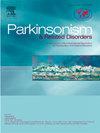帕金森病亚型:方法和临床意义。
IF 3.1
3区 医学
Q2 CLINICAL NEUROLOGY
引用次数: 0
摘要
帕金森病(PD)是一种复杂的神经退行性疾病,在疾病表现和进展方面具有显著的异质性。亚型鉴定仍是帕金森病临床研究领域的重中之重。目前已确定了多种帕金森病亚型。假设驱动亚型是指根据特定标准预先确定的亚型。在假设驱动亚型中,运动亚型是研究和临床中最常见的经验亚型。非运动症状(NMS)亚型的概念相对较新,研究也较少。轻度认知障碍(MCI)是帕金森病较常见的非运动症状亚型之一。数据驱动亚型是一种无假设的方法,通过全面评估多维数据来定义疾病表型。在本综述中,我们总结了不同帕金森病亚型的主要特征:从假设驱动亚型到数据驱动亚型。NMS亚型和数据驱动亚型仍未得到很好的理解,尤其是在生物标记物和进展特征方面。未来基于特定生物制造商的帕金森病亚型将使我们能够更好地反映潜在的病理生理学基础,并加强我们对特定治疗靶点的搜索。我们的目标是开发一种简单的算法,在帕金森病的早期阶段对帕金森病患者进行亚型分型,以便对其病程做出良好的预后,提供有针对性的治疗,并积极预防并发症。了解帕金森病的亚型和异质性还将为未来的临床试验设计提供指导,并帮助临床医生更好地管理帕金森病患者,从而实现有针对性的疾病监测和个性化治疗。图文摘要如下。本文章由计算机程序翻译,如有差异,请以英文原文为准。

Parkinson's disease subtypes: Approaches and clinical implications
Parkinson's disease (PD) is a complex neurodegenerative disorder with significant heterogeneity in disease presentation and progression. Subtype identification remains a top priority in the field of PD clinical research. Several PD subtypes have been identified. Hypothesis-driven subtypes refer to pre-defined subtypes based on specific criteria. Under hypothesis-driven subtypes, motor subtypes are the most common empirical subtype in both research and clinical settings. The concept of the non-motor symptoms (NMS) subtypes is relatively new and less well studied. Mild cognitive impairment (MCI) is one of the more prevalent NMS subtypes of PD. Data-driven subtyping is a hypothesis-free approach, that defines disease phenotypes by comprehensively evaluating multidimensional data. In this review, we summarize the main features for the different PD subtypes: from hypothesis-driven subtypes to data-driven subtypes. NMS and data-driven subtypes are still not yet well understood particularly with regard to biomarker and progression characterization.
Future PD subtyping based on specific biological makers will enable us to better reflect the underlying pathophysiological underpinnings and enhance our search for specific therapeutic targets. The goal is to develop a simple algorithm to subtype PD patients at an early stage of PD that will enable good prognostication of their disease course, targeted therapies to be delivered, and proactive prevention of complications. Understanding PD subtypes and heterogeneity will also guide future clinical trial design and aid clinicians to better manage PD patients that will enable targeted disease surveillance and personalized treatment. The graphical abstract can be seen below.
求助全文
通过发布文献求助,成功后即可免费获取论文全文。
去求助
来源期刊

Parkinsonism & related disorders
医学-临床神经学
CiteScore
6.20
自引率
4.90%
发文量
292
审稿时长
39 days
期刊介绍:
Parkinsonism & Related Disorders publishes the results of basic and clinical research contributing to the understanding, diagnosis and treatment of all neurodegenerative syndromes in which Parkinsonism, Essential Tremor or related movement disorders may be a feature. Regular features will include: Review Articles, Point of View articles, Full-length Articles, Short Communications, Case Reports and Letter to the Editor.
 求助内容:
求助内容: 应助结果提醒方式:
应助结果提醒方式:


